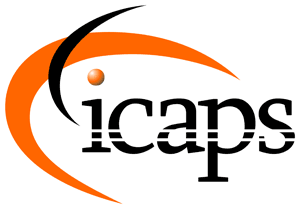Space Application
There are significant number of publications on work related to applying planning technology to space applications. This is directly due to the fact that there are large Planning & Scheduling groups at NASA Ames and JPL research centers in the USA and the European research groups (e.g., PST@ISTC-CNR) that work on funded projects from the European Space Agency ( ESA). Given that many NASA missions are far from earth with long communication delays, onboard autonomous intelligent reasoning capabilities are needed and planning and scheduling can be a significant part of that. While the more complete reference lists can be found by visiting the webpages of those research groups directly, below we are some highlights:
- Remote Agent : This co-winner of NASA 1999 software-of-the-year is perhaps the most famous application. For two days Remote Agent ran on the on-board computer of Deep Space 1 and autonomously control the mission. The goal-based planning & scheduling module that create plans based on uploaded mission goals is one of the three main component of the control system.
- MAPGEN (Mixed Initiative Activity Planning Generator): MAPGEN is an important technology used by mission controllers during NASA's Mars Exploration Rover mission. The software was used as the primary platform for creating the daily activity plans for both Spirit and Opportunity during NASA's Mars Exploration Rover Mission.
- CONSAT: CONSAT is a real application that plans and schedules the performance of nominal operations in four satellites during the course of a year for a commercial Spanish satellite company, HISPASAT.
- SACE
- EOS-1 (JPL)
- Mixed-initiative planning of Mars Exploration Rover activity plans led to an estimated 20-40% increase in science return
(Bresina et al., ICAPS 2005).
- Projects from ESA
Logistics/Transportation
Logistics/transportation has been one of the most popular categories of planning and scheduling applications. This also reflects on the large number of domains used in the IPC that have logistics flavor.
- Multi-model Transportation: TIMIPLAN, using a combination of LP and automated planning, to solve the logistics problem in which at least two modes of transport are used. TIMIPLAN effectively solved real problems from Acciona with up to 300 services, 600 locations, 300 trucks, 300 containers, and 50 train segments.
- Liner Shipping Fleet Repositioning: Liner Shipping Fleet Repositioning Problem (LSFRP) involves moving vessels between services in a liner shipping network. LTOP & POPF planners were shown to be effective in solving real problems from Maersk Line.
- SIADEX: SIADEX is an application used in forest fire fighting, where experts need to obtain valuable tentative fire attack plans, composed of a sequence of timed fighting operations, before making the most suitable decisions when defining the strategy to fight a forest fire.
- Greenhouse Logistics: The Scanalyzer planning domain models the problem of controlling conveyor belts that transport plants between greenhouses and imaging facilities.
- Ship Operations: Transportation and delivery of a list of requested cargo to different locations considering a number of constraints and elements based on a real problem of Petrobras – the Brazilian Petroleum Company.
Manufacturing
- PARC printer (JAIR, ICAPS'05)
- IHI (ICAPS'11)
- Riccardo Rasconi's work (SPARK'12)
- Machine Tool Calibration using HTN & PDDL planners (ICAPS'12)
- Integration of high-level planning & low-level PLC controller for manufacturing automation (TAMPRA'12@ICAPS'12)
Scheduling
- Ship scheduling (Elena's @ ICAPS'12)
Robotics & Motion Planning
- Integrate vehicle routing & motion planning (Wheeler @ ICAPS'12)
- Willow Garage various work
E-Learning
- myPTutor - E-Learning (Antonio Garrido @ ICAPS'12): myPTutor is a joint work to take advantage of Artificial Intelligence planning techniques in the adaptation of sequences of Learning Objects to pedagogical and students' requirements.
(Web) Service Composition
- MARIO - Software composition (IBM demo @ ICAPS'12 SystemDemo + SPARK'12 paper): MARIO is an automated composer, that uses AI Planning for enabling end-users to compose software components into data analysis flows in a goal-driven manner. MARIO uses a language called Cascade for describing the planning domain, including commonly used analysis flow patterns.
Other Applications
- Use of planning for controlling elevators allowed 3 elevators to serve the same amount of traffic as 5 using the previous
control algorithm, and at the same time allowed for new services to be offered (Koehler & Ottinger, AI Magazine 2002).
- E-tourism: e-Tourism is a tourist recommendation and planning application to assist users on the organization of a leisure and tourist agenda.
- Story-building (Julie Porteous)
- Military Training (Carmel & Erez)
- Petrobras pipeline (Daniel Ferber @ ICAPS'12)
- Planning and Scheduling Ship Operations on Petroleum Ports and Platform (ICAPS'12): Planning and Scheduling Ship Operations on Petroleum Ports and Platform address the process of modeling planning and scheduling ship operations on petroleum platforms and ports. The general problem to be solved is based on the transportation and delivery of a list of requested cargo to different locations considering a number of constraints and elements based on a real problem.
- Scenario Planning Advisor: Goal recognition as planning for enterprise risk management
NEW CATEGORY ?

